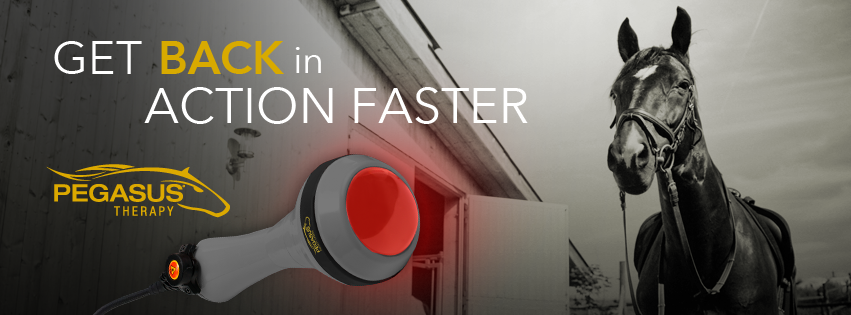Evaluating the Efficiency of Laser Treatment in Equine Treatment for Injury Recovery
The assessment of laser treatment's performance in equine injury recovery depends upon several variables, consisting of healing time, discomfort reduction, and tissue regrowth. Professional researches recommend notable improvements in problems like tendonitis and osteoarthritis, associated to boosted mobile feature and elevated ATP production. Vets frequently observe remarkable end results with laser treatment contrasted to conventional techniques, positioning it as a crucial element in equine care. The need for continual surveillance and tailored therapy strategies can not be overemphasized. What details scientific proof sustains these insurance claims, and just how do vets carry out these methods in technique?
Understanding Laser Treatment
Laser treatment has become a pivotal tool in vet medication, especially in the treatment of equine problems. Understood for its non-invasive nature and efficacy, laser treatment entails the application of certain wavelengths of light to stimulate cells fixing and minimize swelling. This therapeutic method is significantly favored for its capacity to increase the healing procedure in equines experiencing a selection of musculoskeletal injuries and persistent conditions.
The primary system behind laser treatment is its capacity to enhance cellular functions. In addition, laser treatment promotes vasodilation, improving blood flow and oxygen shipment to broken cells, thus speeding up healing.
In equine medication, laser treatment is especially advantageous for problems such as tendonitis, osteo arthritis, and injury recovery. The strategy is lauded for its pain-relieving residential properties, permitting steeds to reclaim mobility and function a lot more swiftly. Vets additionally value its marginal adverse effects contrasted to various other therapy methods, making it a dependable and safe option for equine treatment.

Exactly How Laser Therapy Works

Upon absorption, these photons trigger a collection of biochemical modifications, enhancing mitochondrial feature and causing enhanced adenosine triphosphate (ATP) production. This surge in ATP accelerates mobile metabolic process, promoting cells repair work and regrowth. Furthermore, laser therapy regulates inflammatory reactions by influencing cytokine levels and reducing oxidative stress and anxiety, thus reducing pain and swelling.
An additional significant facet of laser therapy is its duty in improving microcirculation. The treatment promotes vasodilation, boosting blood flow and oxygen distribution to damaged tissues (Equine Therapy). This facilitates the Go Here elimination of cellular particles and supports the expansion of fibroblasts and collagen synthesis, essential for injury recovery
Scientific Proof
The efficacy of laser therapy in equine treatment has been corroborated with numerous professional researches, showcasing its therapeutic potential throughout an array of problems. A research performed by Turner et al. (2012) showed that equines treated with low-level laser therapy (LLLT) for tendon injuries Find Out More exhibited accelerated healing contrasted to those obtaining standard therapies.
Likewise, research study by Johnson and coworkers (2015) focused on equine muscle mass injuries, disclosing that laser treatment substantially expedited muscle fiber regrowth and decreased muscular tissue tightness. Scientific assessments have actually shown that laser treatment can reduce persistent conditions such as osteoarthritis.
Vet Insights

Vets additionally appreciate the flexibility of laser therapy. She aims out that laser treatment can be customized to the details demands of each equine, guaranteeing optimal outcomes.
In addition, vets value the capability to integrate laser therapy with other treatment methods. This multimodal approach can enhance total treatment effectiveness, supplying a detailed option for equine rehabilitation. Such recommendations from skilled specialists highlight the growing approval and application of laser therapy in equine medication.
Practical Factors To Consider
A vital element of applying laser therapy in equine treatment entails comprehending the functional factors to consider that guarantee its efficacy and security. First and primary, it is essential to select the suitable laser gadget, as different kinds differ in wavelength, power, and infiltration deepness. Equine Therapy. Vets must be skilled in these specifications to customize treatment protocols successfully to each injury type
Moreover, the frequency and duration of laser treatment sessions require cautious preparation to maximize therapeutic advantages while Read Full Report lessening any kind of prospective adverse results. Constant tracking of the horse's reaction to therapy can lead essential adjustments in the therapy program. Developing a safe and regulated atmosphere throughout therapies is likewise vital to avoid unexpected exposure to laser emissions, which could hurt both the steed and the trainer.
Educating and qualification of personnel carrying out laser therapy are paramount to make certain correct method and to promote security criteria. In addition, preserving accurate records of each session, including laser setups and observed outcomes, is crucial for reviewing the total performance of the therapy and for making data-driven decisions.
Final Thought
Laser treatment has arised as an efficient technique in equine injury rehabilitation, using significant benefits in recuperation time, pain relief, and tissue recovery. For ideal results, continual tracking and individualized therapy protocols continue to be important in leveraging the complete capacity of laser therapy in equine treatment.